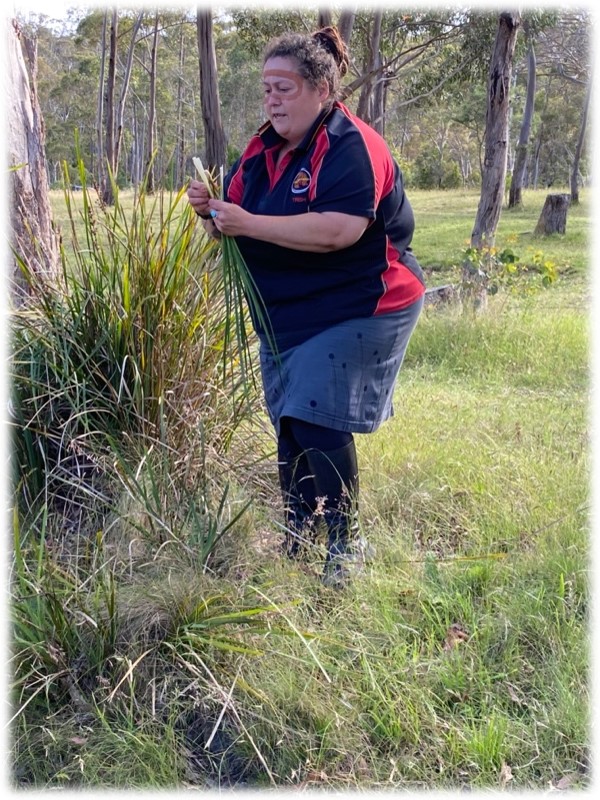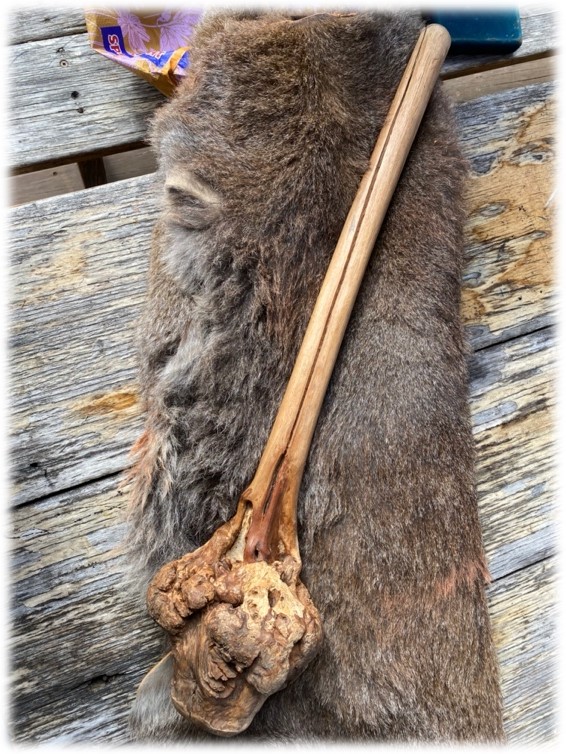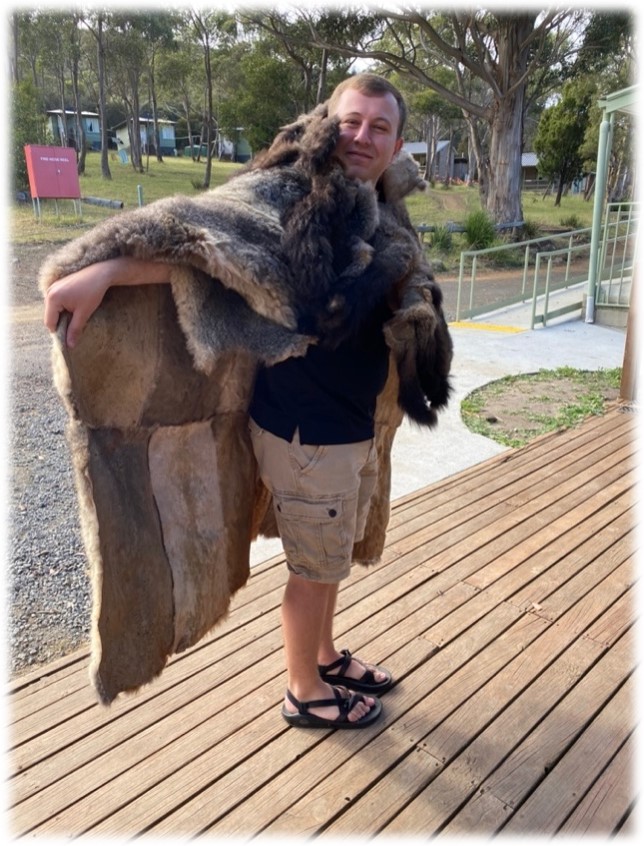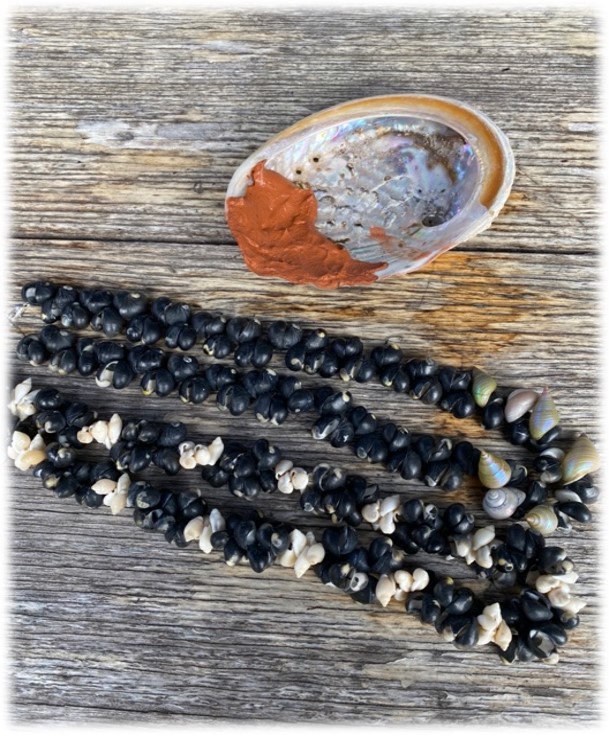by Brooke Mott
In Tasmania, some may recount the beginning of their people’s history back to British colonization in the state, but the true history goes back much further to the original people of Tasmania. The aboriginal people were thought to have arrived to the area 30,000 ya, when an ice age lowered the sea levels and made land travel there accessible. During this time 30,000 – 15,000 years ago, the Tasmanian aboriginals were the most southernly people on Earth. Carbon dating has dated the original peoples to have been in Tasmania up to 100,000 ya, and 120,000 ya on the mainland of Australia. They’re considered the original keepers of Tasmania from their close, mutually beneficial relationship with nature, caring for the land around them. The struggles that the Aboriginal people have gone through is bleak at best, but Tasmania is slowly coming to acknowledge, educate, and support this group that has been the foundation for the country they know today.
Before the British arrived there were 9 nations; 9 vastly different countries across Tasmania. It is estimeated they spoke 13 languages and 57 dialects originally. In 1803 the British arrived to “plant their flag” which was the beginning of the decimation of the aboriginal people. The first massacre was in 1804 and deaths only continued to rise with an increasing British population. In the 1820s land grants were given which made it illegal for the aboriginal people to hunt in these places, basically saying they were now trespassing on their own lands which had just been given away. In 1824 the governor declared martial law on their people so they could be shot on site, where the bounty hunters received 5£ for adults and 3£ for children. The aboriginal population of 30,000 was decimated to 80 people after British invasion. Today, the current population of aboriginals has grown to 23,000 from those that survived to pass on their traditions.

Trish Hodge, who is a “proud aboriginal woman”, has been educating people on the aboriginal culture since the 2nd grade and has a personal family history with these atrocities. Her 4th great grandfather was the leader of one of the resistance groups. He didn’t want to cause more death and looked for a more peaceful way fight for his people, so he befriended George Augustus Robinson. This colonial official promised her great grandfather that if he moved his people to the offshore islands, they would allow them to come back to their homelands once the British people became settled in other areas. The Tasmanian Aboriginals had no written language and did not know to get this contract in writing. Robinson was not in a position to create this agreement and it was filled with false promises. Her great grandfathers four daughters were taken to be work slaves; a similar fate for many of the Aboriginal women.
While there is a dark history for the Aboriginal people of Tasmania, their culture and knowledge still persist and has been passed down from generation to generation. Many of the deeply engrained parts of their culture are created from their relationship to the land as its caregiver, and the idea of constantly looking both to the past and future. The Aboriginal people are known to anoint themselves in face paint and mud on their body for different uses or to symbolize different meanings. Trish wore a mask of iron color mud made from ochre, a soft rock, in a line across her forehead to symbolize that she was thinking about her ancestors and the ancestors were thinking of her. For her family, when they’re being fully painted, they use circles signifying generations starting around the navel. Their knowledge is taught from those before them and given to those after them, so the connection with family and culture is constantly on the forefront of their cultural practices. But there are also very useful reasons behind their practices. Men wear the mud almost every day, smearing it over their bodies before a hunt to smell like the earth and disguise their sent from their prey. It also works as protection against the sun. Hunting is an essential part of the Aboriginal culture where they give to the earth as much as they get; they get food and supplies from the nature around them while they protect the wildlife and land.
Women in their culture historically did 80% of the food gathering, staying behind to take care of the children and diving for oysters, clams, and abalones while men were tasked with going on multiday hunting trips for larger animals like kangaroos. When hunting they often use a “donker” or “shusher,” that looks like a long, thick club, as a weapon. It’s made from a small gum tree where they cut through the tree carefully so it can regrow, and they keep the leaves for medicine and other uses. When hunting, they make use of every part of the animal to be resourceful and unwasteful with the gifts they are given.

Stomachs of kangaroos, wallabies, and other animals are used as water carriers, intestines are used to store ochre, and kangaroo stomach acid, which is more acidic than human’s, is used to clean shells for jewelry. Echidna spines and kangaroo bones/sinews are used to poke holes in the shells for jewelry. They’re also used for sewing, such as possum blankets used to fight the cold where you’re given your first opossum skin at birth and it’s added to as you grow. By taking full advantage of their hunts and the plants around them, Aboriginal people have a lifestyle much less work-centered than the average Australian. Typical contemporary life revolves around “working” in some way 10-16 hours a day, while the Aboriginal culture spends only 2-4 hours a day on food, fire, and shelter.
Using the plants around them is just as, if not more important than their hunting. They see a use for every native plant whether it be food, medicine, craft, or seasonal indicator. Sag or Lamandra is a staple food where its white base tastes like snow peas and it’s ground into flour. A handful of native cherries, a sweet treat, contain the same amount of vitamin c as an entire orange. The flowers are crushed into a paste that they use as a coagulant and the wood can be used to make their ceremonial clapsticks. They shake the trees to catch what cherries fall in their possum blankets and leave which stays on the tree for the birds and other animals to eat. Seaweed is used to carry water and adds iodine to the water, which is essential as there is no natural iodine in Tasmanian soil and is needed for proper health. Peppermint gum is minty and can be used as an antibacterial and antifungal. It’s used for smoking ceremonies and an important element of burial ceremonies. Bodies are sat crossed legged inside of a hollow tree, surrounded by their things, and the smoke surrounds them retuning the cycle of life and asking them to watch over their people. Plants can also be used as visual cues for the seasonal and life cycles. Certain types of wattle seeds, when flowering, signify the wallaby birthing season, so they know not to hunt in order to preserve the future populations of wallaby in the area.
The importance of these cultural aspects is the relationship the Aboriginal people have with the natural world around them. The Tasmanian Aboriginal people cared for the land in a much deeper way protecting it and building a respectful view of the world that gives them the elements to live and thrive. They do not see respecting and caring for nature as a luxury but as an essential way of life. They cared for and lived harmoniously in Tasmania for thousands of years before the British colonization. Today the world, including Tasmania, is dealing with pollution, diversity loss, and environmental degradation. This has come from a loss of appreciation and intimate connection with nature, viewing our natural resources in a utilitarian style instead of a mutualistic and interdependent one.

There is much to be learned from the ways of the Aboriginal Tasmanian people that can be advantageous for a better future. Tasmania is starting to recognize and acknowledge the original people and owners of the land. In many presentations, museums, and protected areas Australia begins by an acknowledgement of country to the original owners of the land. They’ve started to include Aboriginal groups in more decisions including natural resource management. Controlled burning is a historical practice of a healthy environment but has been phased out for decades. Farmers and private landowners have been allowing Aboriginal groups to do cultural burns on their lands to promote better grass for cattle and sheep, and these practices also reduce fuel in bush fires. Parks and wildlife are starting to listen by including cultural burns and have indigenous ranger teams and indigenous fire crew.
While strides are being taken to recognize and appreciate the work Aboriginal peoples have done for the country, there is still much work to be done. It is still even illegal for the Aboriginal people to hunt with spears and weapons in their ancestral ways, but it’s done anyway because they will lose the culture if they stop.
As Trish said, “culture is sacred not secret”. It’s essential that more people know about culture and how to look after the country which is better for everyone; “it’s the culture of the land”. There is much to learn from Aboriginal culture and their views of nature to protect and conserve the lands we live on. Each step that is taken to include the Aboriginal culture in natural resource and land management is a step for the better.
Key Takeaways
- Aboriginal culture reaches much farther back than previously thought and set the foundation for Tasmania today.
- Each animal has an extensive set of uses as materials for parts of everyday life.
- All native Tasmanian plants have a use whether it be food, medicine, craft, or seasonal signifiers.
- Tasmania, and the whole of Australia, is taking steps to acknowledge and learn from Aboriginal culture but still has much to learn.
- Aboriginal cultural practices are in tune with the natural cycles and health of the land around them.
